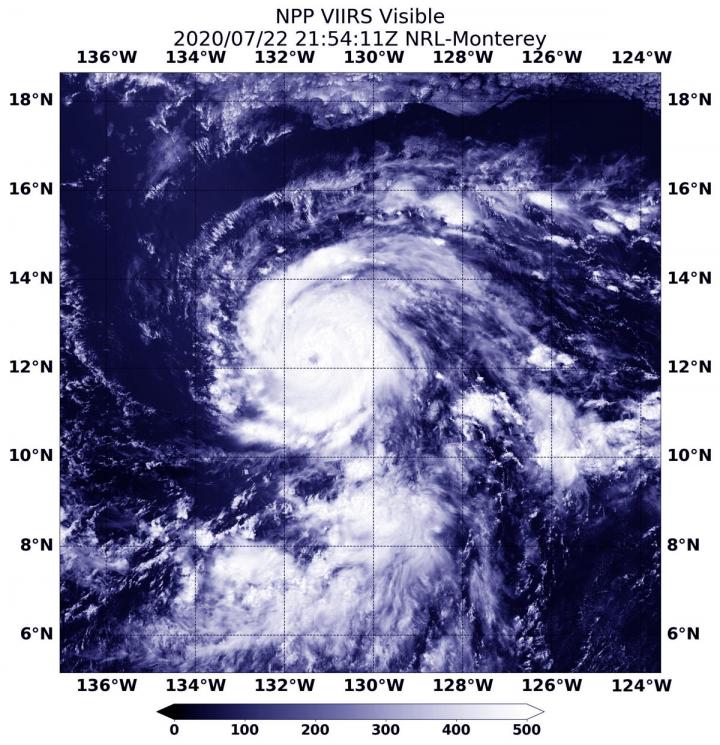
Credit: Credit: NASA/NRL
Although a compact storm, hurricane Douglas in the Eastern Pacific is mighty, as it has become the season’s first major hurricane. NASA-NOAA’s Suomi NPP satellite provided forecasters with an image of Douglas that showed development of an eye as it quickly intensified.
Early on July 22, Douglas was still a tropical storm. By 11 a.m. EDT (1500 UTC) it had strengthened into a hurricane. At 5:54 p.m. EDT (2154 UTC), the Visible Infrared Imaging Radiometer Suite (VIIRS) instrument aboard Suomi NPP revealed that the storm developed an eye. VIIRS showed that powerful bands of thunderstorms had circled the eye. Bands of thunderstorms were spiraling into the low-level center from the northern and southern quadrants. There was an indication that only a little dry air that earlier affected the storm, remained. What little dry air there was, stretched across the northern portion of the circulation, which was limiting the amount of deep convection wrapping around that part of the eye.
By July 23 at 5 a.m. EDT (0900 UTC), Douglas had rapidly intensified into a major hurricane. Maximum sustained winds have increased to near 120 mph (195 kph) with higher gusts. Douglas is a category 3 hurricane on the Saffir-Simpson Hurricane Wind Scale. Hurricane-force winds extend outward up to 25 miles (35 km) from the center and tropical-storm-force winds extend outward up to 105 miles (165 km).
The center of Hurricane Douglas was located near latitude 13.1 degrees north and longitude 134.0 degrees west. That is about 1,470 miles (2,365 km) east-southeast of Hilo, Hawaii. Douglas was moving toward the west-northwest near 17 mph (28 kph) and this general motion is expected to continue through Saturday. The estimated minimum central pressure was 967 millibars.
Satellite data on July 23 at 5 a.m. EDT showed Douglas had a ragged but nearly clear eye surrounded by cold cloud tops of minus 70 degrees Celsius (minus 94 degrees Fahrenheit), indicating very powerful thunderstorms.
NHC forecasters note that some additional strengthening is possible on Thursday. Gradual weakening is forecast to begin by early Friday. Interests in the Hawaiian Islands should monitor the progress of Douglas.
Tropical cyclones/hurricanes are the most powerful weather events on Earth. NASA’s expertise in space and scientific exploration contributes to essential services provided to the American people by other federal agencies, such as hurricane weather forecasting.
###
For updated forecasts, visit: http://www.
By Rob Gutro
NASA’s Goddard Space Flight Center
Media Contact
Rob Gutro
[email protected]
Original Source
https:/




